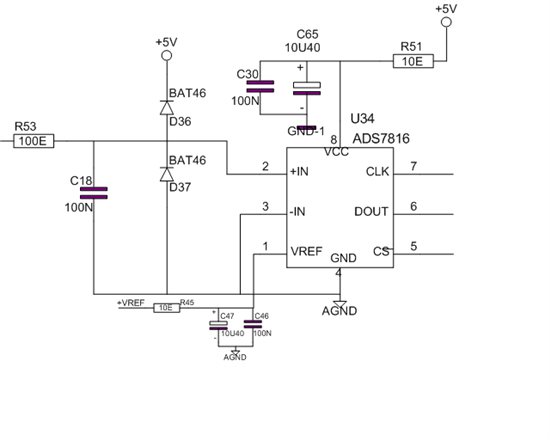
Hi All,
My question is : (see above circuit)
Is it possible for the ADS7816 to become in a latch-up state when the Vref is powered up approx. 500us before VCC ?
Vref and Vcc are derived from the same supply but Vref is measured to rise quicker than Vcc. This allows Vref to become approx. 1V-1.2V higher than Vcc during start-up.
Vref comes from a REF02 and I've seen that sometimes the output of the REF02 collapses. This happens very randomly and with about 1% of the produced boards.
Thanks in advance,
Jan

